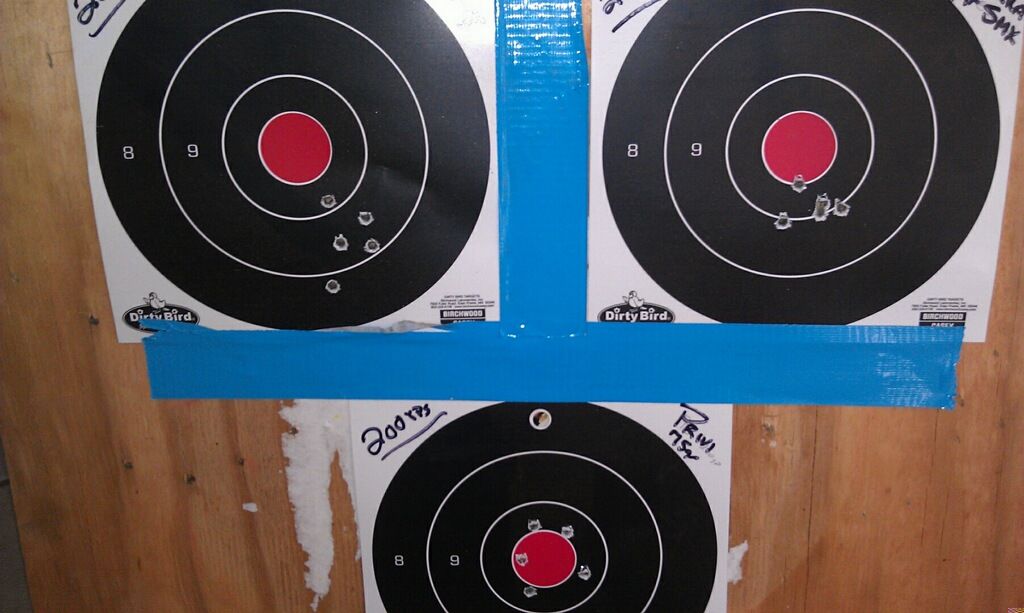Hello folks,
Been working up some 77gr SMK's in my 1-9" twist Bushmaster Varmint AR and thus far have tried Benchmark and 8208 XBR powder. Found some "OK" accuracy around 1 MOA , but nothing consistently sub MOA. Any of you have any accurate loads ? I even tried seating the bullet for a .020" bullet jump (which at that length I had to single feed the bullets as they were too long for mag feed), didn't notice much better accuracy from simply loading to Lyman's suggested mag length. I'm thinking maybe my AR just doesn't like the 77gr.
Been working up some 77gr SMK's in my 1-9" twist Bushmaster Varmint AR and thus far have tried Benchmark and 8208 XBR powder. Found some "OK" accuracy around 1 MOA , but nothing consistently sub MOA. Any of you have any accurate loads ? I even tried seating the bullet for a .020" bullet jump (which at that length I had to single feed the bullets as they were too long for mag feed), didn't notice much better accuracy from simply loading to Lyman's suggested mag length. I'm thinking maybe my AR just doesn't like the 77gr.
Last edited:



